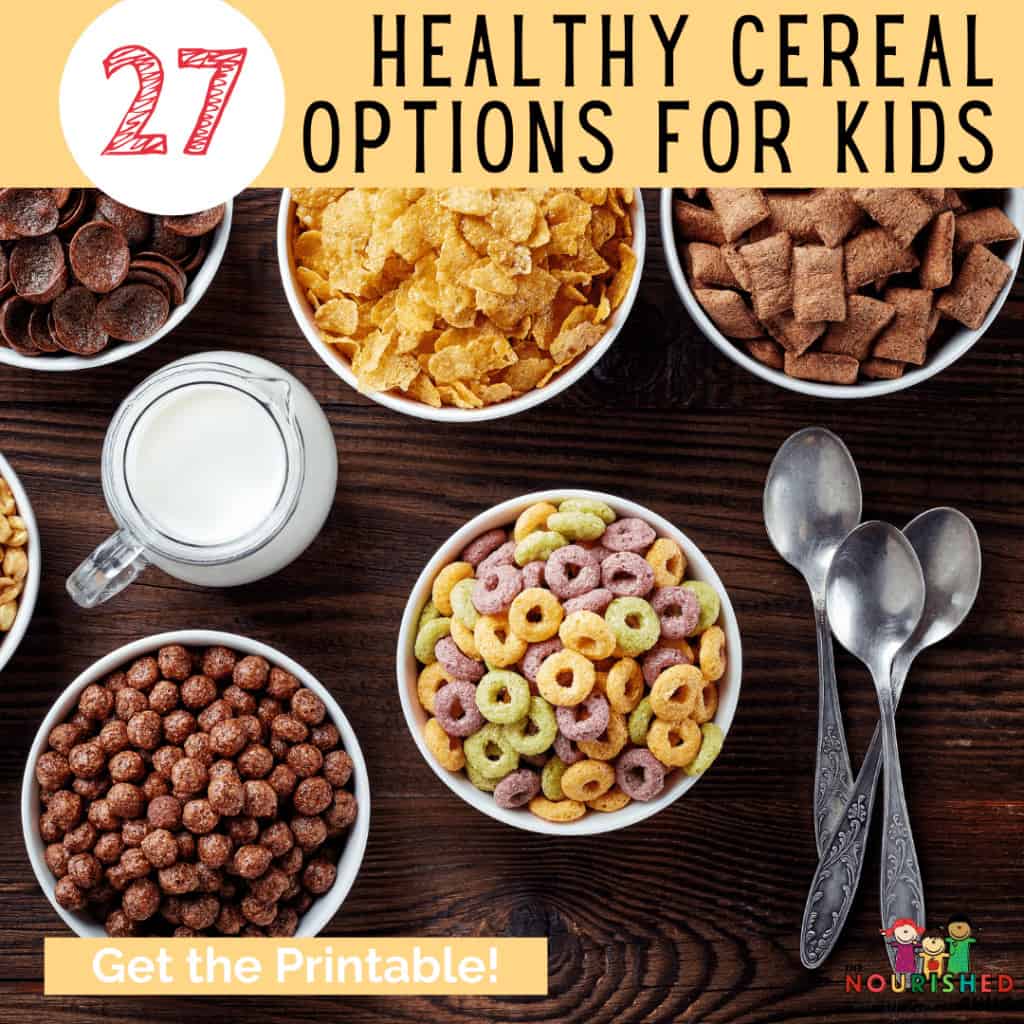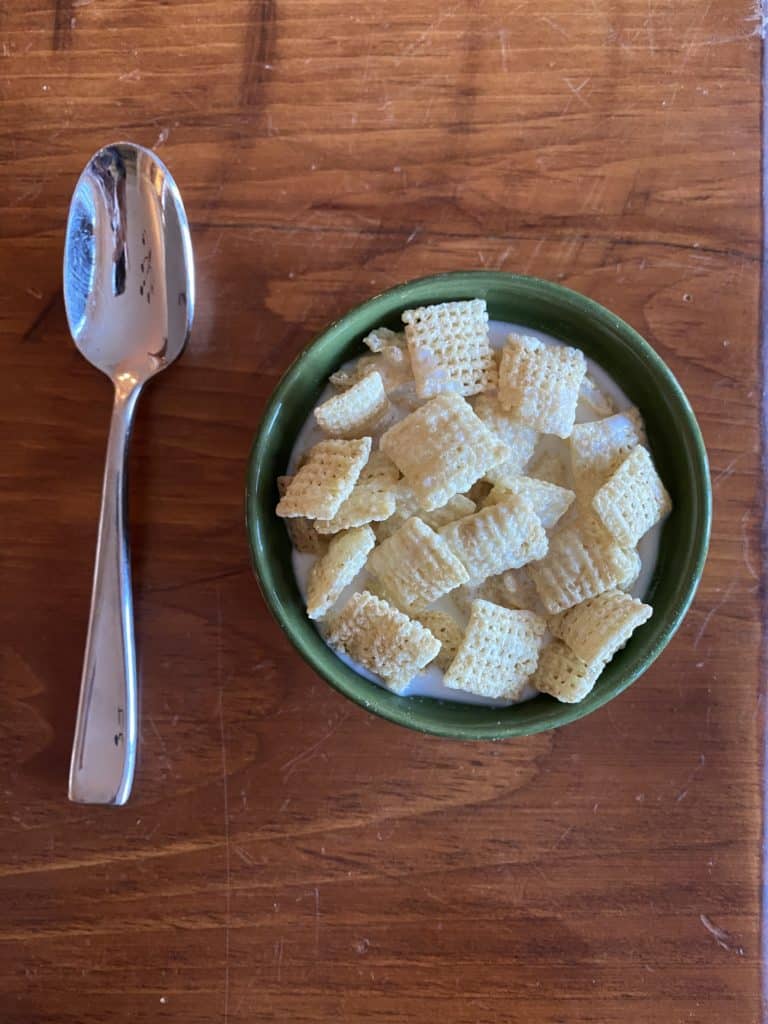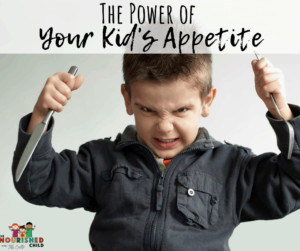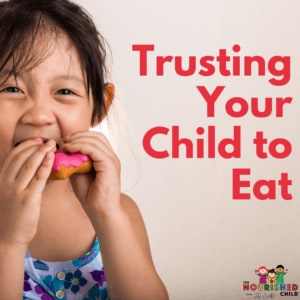Top 27 Healthy Cereals for Kids (Low Sugar, High Fiber)
September 28, 2020
Learn how to choose a healthy cereal for kids with my top 27 list of low sugar, high fiber cereals (plus grab my free printable).
I get asked about cereal for kids a lot.
Parents ask me questions like:
What are the best low sugar cereals for kids?
What are the healthiest cereals I can buy for my kids?
Which cereal brands are best for kids?
If I look at the cereal box, can I tell if it’s healthy? Do I look at the ingredients in cereal?
Can you give me a list of cereals that are healthy?
I usually rattle off five or six different low sugar, high fiber cereal options that I believe, as a pediatric nutritionist, qualify as nutritious and healthy for children.
Typically, it’s the ones I buy and feed my own family.
But, seriously, what are the best and healthiest cereals for kids?
It’s such a common question, I thought I’d dig a little deeper and address it here.
In this article, you’ll learn what defines a healthy cereal for kids, what to look for on the ingredients label, and 27 healthy cereal options for kids you can easily buy at your local grocer.

The History of Cereal Brands
Cereal is a breakfast staple. It’s been around since 1863, when the first cold breakfast cereal, called Granula, was invented. From there, granola was conceived.
Afterward, the Kellogg brothers brought Corn Flakes to market. Since then, breakfast cereal has been a mainstay in the U.S. diet.
When I was a kid, I remember Cheerios and Corn Flakes.
I also remember getting really excited when Cap’n Crunch and Cookie Crisp came to market.
In college, my favorite cereal for breakfast and snacking was Cracklin’ Oat Bran, until I discovered Grape Nuts with an added topping of raisins.
Although cereal has gotten a bad rap over recent years for being too sugary, the truth is, a healthy cereal for kids can be a vehicle for some significant nutrients, particularly iron, zinc, folate, and B vitamins.
Fortified Cereals: A Source of Important Nutrients
If you look at the Nutrition Facts panel on any cereal box, you’ll see at the bottom a box that outlines the Daily Value for micronutrients.
These are represented as a percentage. Any percentage over 10% is deemed a good source of that nutrient. A value of 20% is considered a high source of that nutrient. And a value of 5% would be a low food source of that nutrient.
Food fortification was done in an effort to alleviate common nutrient deficiencies. For example, flour and bread products were fortified with folic acid in order to prevent neural tube defects like spina bifida.
Milk was fortified with vitamin D to reverse the growing trend of rickets.
Salt was fortified with iodine to prevent goiters.
Cereal is one of the most commonly fortified foods in the marketplace.
Fortification means that vitamins and/or minerals are added to improve the nutritional quality of the food or to follow mandatory fortification rules, as in the case of folate added to flour and bread products.
In cereal for kids (and adults), you will commonly find the following:
B vitamins in Cereal
The B vitamins such as thiamin (B1), riboflavin (B2), niacin (B6), pantothenic acid, and vitamin B12 may be added to cereal to boost its overall nutrient content.
Iron- Fortified Cereal
Iron is added to cereal because it is an essential nutrient for the body to properly function. In young, developing kids, iron is an at risk nutrient, especially for babies.
Zinc
You can find zinc in many kids cereals, especially whole grain types. Fiber and phytates found in whole grains, legumes, nuts and seeds may bind zinc and make it difficult for the body to absorb.
Fortification of cereal with zinc may promote better absorption from whole grain, high fiber cereals.
Vitamin D and Calcium
Calcium and vitamin D are often added to cereals for kids. Adding calcium has been shown to improve overall absorption of calcium.
Vitamin D was added during a time when rickets (bone softening and improper bone development resulting in bowed legs or knock knees) was a public health concern.
Ironically, both calcium and vitamin D continue to be a nutrient of concern for children.
Cereal can be a vehicle for important nutrients, particularly iron, zinc, folate, and B vitamins. Click To TweetAs you can see, fortification allows cereal to be a robust and reliable source of nutrition.
However, there are critics of food fortification and the potential for nutrient toxicity, especially for vitamin A and niacin.
If your child takes a multivitamin and eats a lot of cereal, it’s possible to go overboard on certain nutrients.
High Fiber Cereal for Kids
Cereal may be a good source of fiber, or it may not be. Fiber is so important for kids, I consider it a requirement when evaluating the best cereal for kids.
Whole grain cereals will always be made with whole grain ingredients.
Other cereals have very little fiber and are made with refined grain products.
As a result, some cereals may be fortified with additional fiber sources to bring the fiber content up.
Generally, you can see on the front of the cereal box whether a particular cereal is a good source of whole grains by the presence of a whole grain stamp.
You can also look on the Nutrition Facts panel for the amount of fiber per serving. A serving of whole grains means the product contains 16 grams of fiber.
Children should try to get their daily requirements for fiber from a variety of foods. Getting a source of fiber at the start of the day (or as a snack) through a healthy cereal may help your child meet their fiber requirements.
As I mentioned, fiber is one of my inclusion criteria for a healthy cereal for kids, as it helps them meet their daily needs.
Fiber Intake Goals for Kids (per Day)
| 1-3 years | 4-8 years | 9-13 years | 14-18 years |
|---|---|---|---|
19 grams | 25 grams | Girls: 26 grams
Boys: 31 grams | Girls: 26 grams
Boys: 38 grams |
Sugar in Kids Cereals
The amount of sugar in a serving of cereal is certainly something to consider. A serving of cereal can contain anywhere from 1 gram of added sugar to 18 grams of added sugar, and possibly more.
In parent-speak, that means next to no sugar per serving and all the way up to 4 ½ teaspoons of sugar per serving. This sugar is built into the cereal, so anything else added to the bowl increases the overall sugar content.
For a refresher on how much sugar children should be eating in their daily diet, read: Simplifying the New Added Sugar Recommendations for Kids.
Because sugar is prevalent in children’s diets, I recommend low sugar cereals for kids.
I've got a filter for analyzing which #cereals are best for your child. Check it out! #healthycereal #lowsugar #highfiber Click To TweetBenefits of Healthy Cereal for Kids
According to a 2014 systematic review in Advances in Nutrition, breakfast cereals, especially oat-, barley-, or psyllium-based ones can help lower cholesterol concentrations.
High-fiber, wheat-based cereals can improve bowel function, relieving constipation symptoms.
[Got a constipated kid? In need of some real food remedies for relieving constipation in kids? Read: Constipation in Kids: Quick Relief with Real Foods]
Additionally, regular breakfast cereal consumers had higher intakes of carbohydrate, total sugars, and milk, and lower intakes of fat and cholesterol.
As you can guess, the consumption of vitamins and minerals was better. And, there was a greater likelihood of meeting the requirements for them, especially for calcium.

How to Choose Cereal for Kids
I want all kids to start the day right with a nutritious breakfast. As such, I use a filter when I look at and evaluate the best cereal for kids. My first filter is the amount of sugar contained in a serving of cereal.
1. Look for Low Sugar Cereal for Kids
I like to target 9 gm or less of sugar per serving. This equates to about 2 teaspoons of sugar per serving.
If you can go lower, great, but I find that many of the low sugar cereals aren’t well-liked by children.
Rest assured, the cereals that fall into this category will still be healthy and won’t include Cocoa Puffs, Trix or Lucky Charms.
It’s also important to note that serving sizes differ with each cereal brand. Some may be a ½ cup, while others can serve up to 1 ¼ cup.
27 of the Best Cereals for Kids + a FREE Cereal Chart Click To Tweet2. Look for High Fiber Cereal
The second thing I look at is the fiber content. I like to see some fiber!
Constipation is a real issue for some kids. A high fiber cereal can help with this issue.
Look for cereals with 3 grams of fiber or more per serving.
In order to get enough fiber throughout the day, your child should also be eating foods such as fruits, vegetables and whole grains. If the cereal your child loves is hovering around 2 grams of fiber per day, then top it with a banana or berries to boost the fiber content.
I’ve created a quick cereal chart for you to help you choose a heathy cereal for your child.
Using this chart, you can determine which cereal (s) would be best for your child and family. You’ll find cereals that (mostly*) meet my criteria for low sugar and a source of fiber.
*One low sugar cereal has no fiber! 🙁
I’ve done the homework for you and reviewed 27 different cereals that meet the low sugar, good source of fiber criteria I’ve laid out above. Just click on the link below to get your free copy!

Need More Help with Feeding Your Child?
Check out my workshops, classes and guidebooks to help you raise good eaters.
This article was originally published in April 2018 | Updated in September 2020 to add more healthy cereal options to the list.










